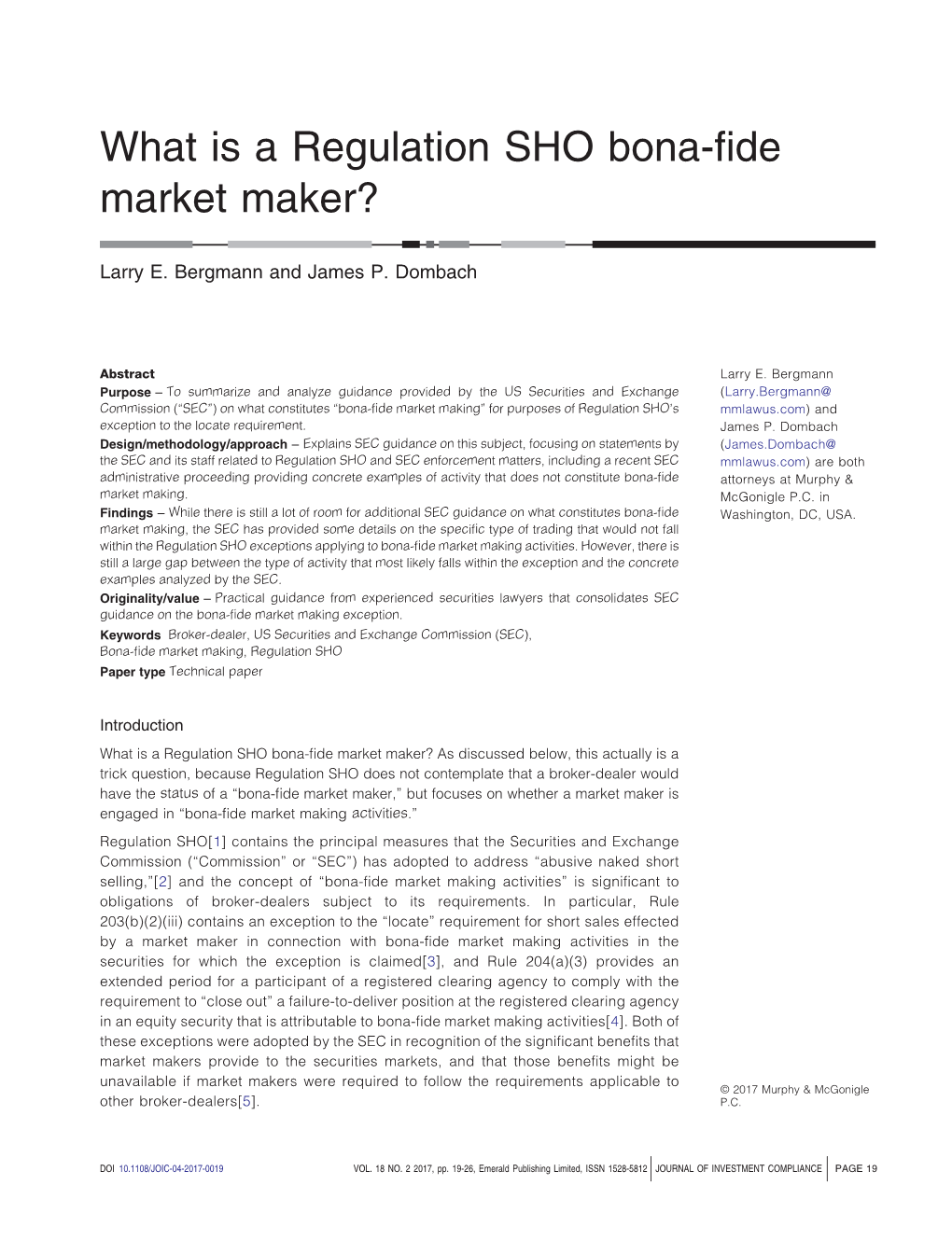Regulation Sho Rule 201 : What it is
Regulation Sho Rule 201: What You Need to Know
The Regulation Sho Rule 201 is an important regulation implemented by the Securities and Exchange Commission (SEC) to ensure fair and orderly markets. It is vital for investors and traders to understand this rule in order to navigate the stock market effectively. In this article, we will delve into the details of Regulation Sho Rule 201, its implications, and how it affects various market participants.
1. What is Regulation Sho Rule 201?

Regulation Sho Rule 201, also known as the Alternative Uptick Rule, is a regulation that aims to prevent abusive short-selling practices. Short-selling is a trading strategy where traders borrow shares and sell them in the hope of repurchasing them at a lower price to make a profit. However, this practice can potentially lead to market manipulation and downward pressure on stock prices.
The Alternative Uptick Rule was introduced in 2010 as an extension to the existing short sale regulation, Regulation SHO. It requires traders to wait for a price uptick before executing a short sale when a stock's price has decreased by more than 10% in a single day.
2. Implications of Regulation Sho Rule 201

The implementation of Regulation Sho Rule 201 has significant implications for market participants, including traders, investors, and companies. Here are some key implications:
2.1 Reduced Market Manipulation

One of the primary goals of Regulation Sho Rule 201 is to reduce market manipulation caused by abusive short-selling practices. By restricting short sales when a stock's price has decreased significantly, the rule aims to prevent cascading declines and restore stability to the market.
2.2 Maintaining Market Liquidity

While the regulation aims to curb manipulative practices, it also aims to preserve market liquidity. By allowing short sales during price upticks, Regulation Sho Rule 201 ensures that there is still sufficient trading activity in the market. This allows for efficient price discovery and promotes healthy market dynamics.
2.3 Impact on Traders and Investors

Traders and investors need to be aware of the implications of Regulation Sho Rule 201 on their trading strategies and investment decisions. The rule may impact short-selling strategies, as traders must wait for an uptick in price before executing a short sale. This could limit the ability to profit from declining stock prices and require more cautious trading approaches.
3. Frequently Asked Questions (FAQs)
3.1 What is the purpose of Regulation Sho Rule 201?
The purpose of Regulation Sho Rule 201 is to prevent abusive short-selling practices and maintain fair and orderly markets.
3.2 How does Regulation Sho Rule 201 impact market participants?
Regulation Sho Rule 201 has implications for traders, investors, and companies. It aims to reduce market manipulation, maintain market liquidity, and requires traders to wait for a price uptick before executing a short sale.
3.3 Are there any exemptions to Regulation Sho Rule 201?
Yes, there are certain exemptions to the Alternative Uptick Rule. For example, market makers are allowed to engage in short sales without waiting for a price uptick.
3.4 How does Regulation Sho Rule 201 align with other regulations?
Regulation Sho Rule 201 is an extension to the existing short sale regulation, Regulation SHO. It complements other regulations that aim to maintain fair, orderly, and transparent markets.
Conclusion
Regulation Sho Rule 201, or the Alternative Uptick Rule, plays a crucial role in maintaining fair and orderly markets. It aims to prevent abusive short-selling practices while preserving market liquidity. Traders and investors need to understand and adapt to the implications of this rule in order to navigate the stock market effectively. By complying with Regulation Sho Rule 201, market participants can contribute to the overall integrity and stability of the financial markets.
Regulation SHO Pilot | Short (Finance) | Nasdaq
 Image Source : www.scribd.com
Image Source : www.scribd.com regulation sho
What Is A Regulation SHO Bona-Fide Market Maker? - DocsLib
 Image Source : docslib.org
Image Source : docslib.org Regulation Sho And Rule 10a-1 (Us Securities And Exchange Commission
 Image Source : www.bol.com
Image Source : www.bol.com Alu Memes. Best Collection Of Funny Alu Pictures On IFunny
 Image Source : ifunny.co
Image Source : ifunny.co SEC Charges Investment Adviser And Its Associated Individuals For
 Image Source : vigilantllc.com
Image Source : vigilantllc.com Regulation SHO - NASDAQtrader.com
 Image Source : studylib.net
Image Source : studylib.net What Is Regulation SHO And What Does It Imply For GameStop Stock
 Image Source : www.thestreet.com
Image Source : www.thestreet.com Bed Bath & Beyond Stock Is On The Regulation SHO List. What Does That
 Image Source : www.thestreet.com
Image Source : www.thestreet.com Regulation sho and rule 10a-1 (us securities and exchange commission. Alu memes. best collection of funny alu pictures on ifunny. Bed bath & beyond stock is on the regulation sho list. what does that. What is regulation sho and what does it imply for gamestop stock. What is a regulation sho bona-fide market maker?